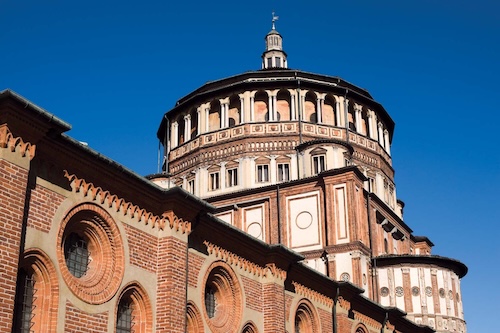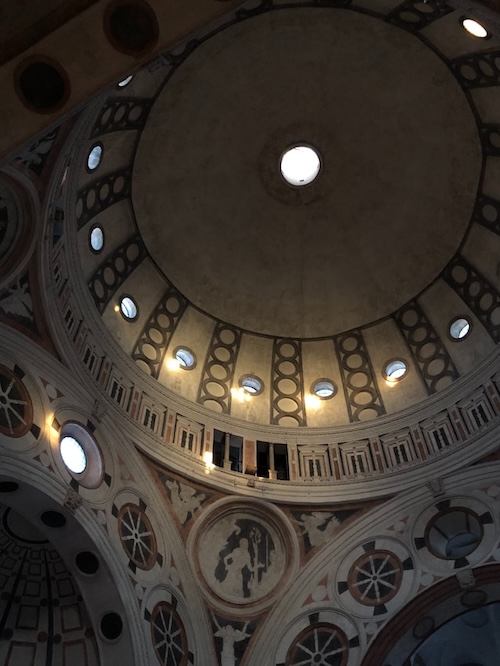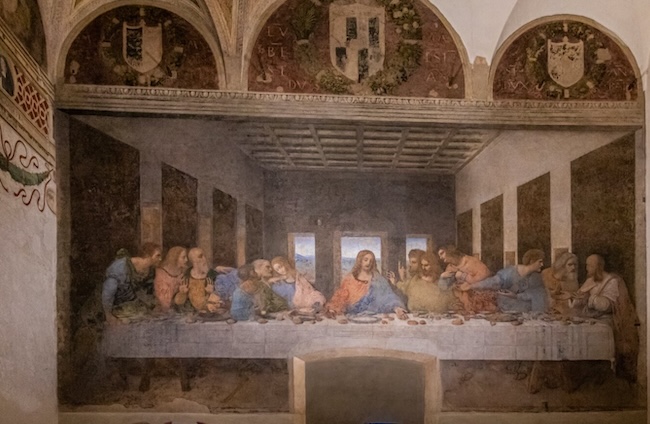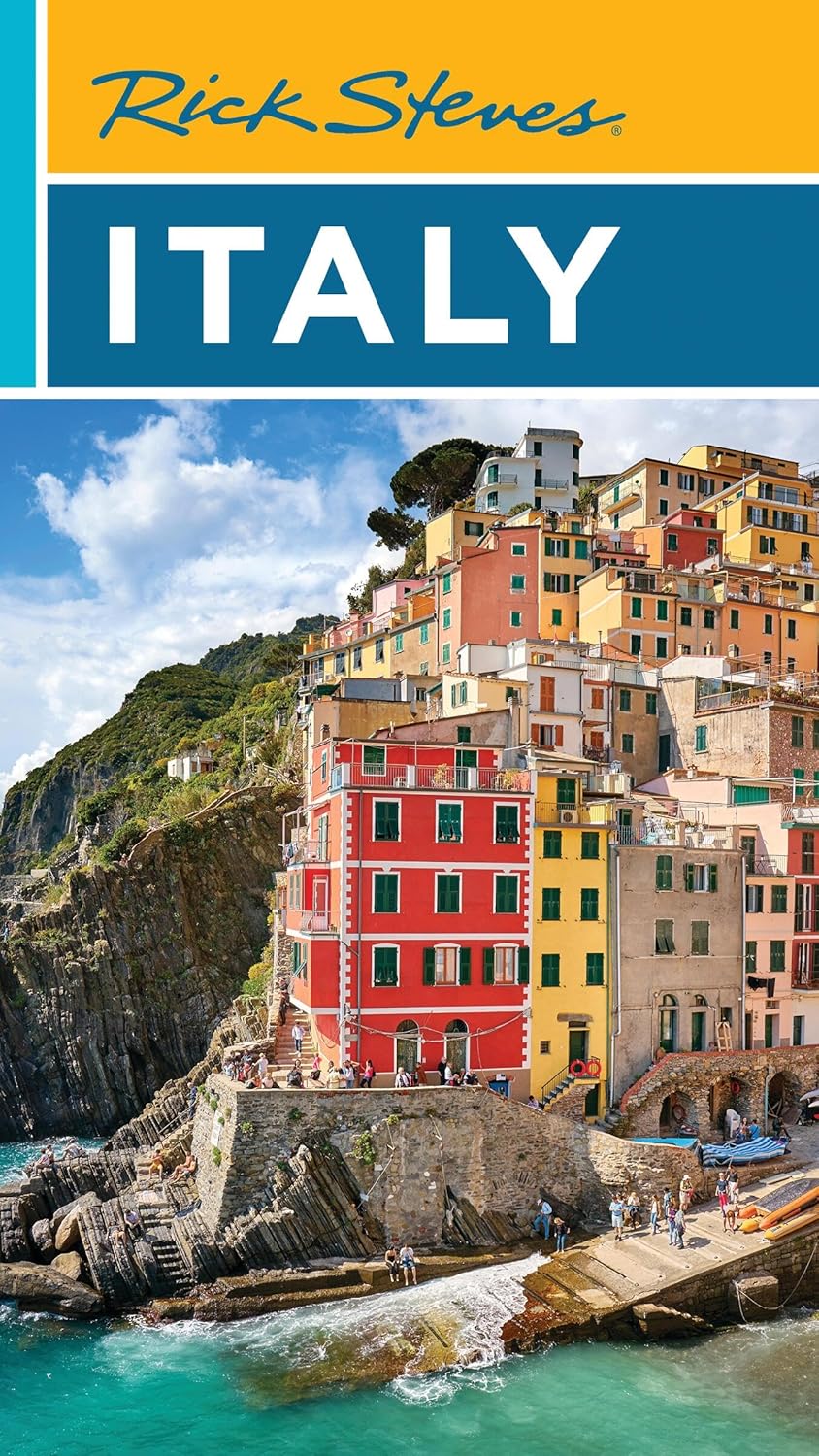Should You Visit The Santa Maria delle Grazie Milan?
Yes! The Santa Maria delle Grazie Milan is something very special.
Have you ever wondered what it feels like to stand in front one of the world's most famous paintings, in its original setting? Santa Maria delle Grazie Milan offers exactly that experience, housing Leonardo da Vinci's masterpiece "The Last Supper".
This remarkable church and convent complex represents one of Milan's most treasured cultural gems, drawing visitors from across the globe who seek to witness both artistic brilliance and architectural beauty in a single, unforgettable location.
Should You Visit The Santa Maria delle Grazie Milan?
 Santa Maria delle Grazie exterior
Santa Maria delle Grazie exteriorLocated in the heart of Milan's Magenta district, Santa Maria delle Grazie stands as a testament to Renaissance artistry and Dominican spirituality. The complex is located on Corso Magenta, just a short walk from the bustling city center, making it easily accessible for tourists exploring Milan's rich cultural landscape.
Getting to Santa Maria delle Grazie Milan is surprisingly straightforward, regardless of your starting point in the city. The most convenient option is taking the Milan Metro's red line (M1) to either Cadorna or Conciliazione stations, both within easy walking distance of the church.
If you prefer the green line (M2), Sant'Ambrogio station offers another excellent access point, requiring just a pleasant five-minute stroll through Milan's charming streets.
For those who enjoy exploring on foot, the church is perfectly positioned for a leisurely walk from Milan's central attractions. From the famous La Scala opera house, it's approximately a fifteen-minute walk that takes you through some of the city's most elegant neighborhoods.
This route allows you to soak in Milan's sophisticated atmosphere while building anticipation for your visit to this extraordinary religious and artistic site.
Public transportation enthusiasts will find several bus routes serving the area around Santa Maria delle Grazie. Routes 50, 58, and 94 all stop near the church, providing additional flexibility for your travel plans.
Taxis and ride-sharing services are also readily available throughout Milan, though walking or using public transport often proves faster given the city's efficient transit system and occasional traffic congestion.
Should You Visit The Santa Maria delle Grazie Milan?
The history of Santa Maria delle Grazie begins in the late 15th century, when Dominican friars established their convent on this site. Construction started in 1463 under the direction of architect Guiniforte Solari, who designed the original Gothic structure.
However, the church's destiny changed dramatically when Ludovico Sforza, Duke of Milan, decided to transform it into a family mausoleum, commissioning significant renovations that would elevate its status considerably.
Bramante, one of the Renaissance's most celebrated architects, took over the project in the 1490s, redesigning the church's eastern sections with his distinctive Renaissance style.
His intervention created the stunning contrast you see today between the Gothic nave and the Renaissance apse and dome. This architectural dialogue between two great periods makes Santa Maria delle Grazie Milan a unique study in stylistic evolution and artistic collaboration.
The church's most famous chapter began when Ludovico Sforza commissioned Leonardo da Vinci to paint "The Last Supper" on the refectory wall of the adjacent Santa Maria convent.
Between 1495 and 1498, Leonardo worked on this masterpiece, experimenting with new techniques that would both create his greatest triumph and present conservation challenges for centuries to come. This commission transformed a local Dominican church into one of the world's most important artistic destinations.
The opening hours:
The church itself is typically open to visitors Tuesday through Sunday from 8:15 AM to 7:00 PM, with Monday closures for maintenance and restoration work. However, these hours can vary during religious holidays and special events, so check the official website before you visit, to ensure you won't encounter any unexpected closures.
Visiting "The Last Supper" requires separate planning due to its protected status and limited access. Viewing slots are available Tuesday through Sunday, with sessions running from 8:15 AM to 6:45 PM in 15-minute intervals. Each group is limited to 25 people, and visits must be booked well in advance – often weeks or months ahead during peak tourist seasons. This restriction protects the fragile fresco while ensuring an intimate viewing experience.
Entry costs vary depending on what you wish to see during your visit. Access to the church itself is free, allowing you to admire Bramante's architectural genius and the beautiful interior decorations without any financial commitment. This makes Santa Maria delle Grazie Milan an excellent stop for budget-conscious travelers who still want to experience significant historical and artistic sites.
Tickets for "The Last Supper" are priced at €15 for adults, with reduced rates of €2 for EU citizens aged 18-25 and free admission for children under 18. Booking fees of €2 per ticket apply when reserving online, which is virtually mandatory given the limited availability.
Audio guides are available for an additional €3.50, and are highly recommended to fully appreciate the historical context and artistic techniques Leonardo employed.
Should You Visit The Santa Maria delle Grazie Milan?
 Santa Maria delle Grazie exterior
Santa Maria delle Grazie exteriorThe exterior of Santa Maria delle Grazie immediately captures your attention with its distinctive brick facade and elegant proportions. The Gothic sections, characterized by pointed arches and vertical emphasis, contrast beautifully with Bramante's Renaissance additions, which feature classical proportions and harmonious geometric forms. This architectural conversation between periods creates a visual narrative that reflects Milan's evolving artistic tastes and cultural influences.
As you approach the main entrance, notice the intricate terracotta decorations that adorn the facade. These delicate ornamental elements showcase the exceptional craftsmanship of Lombard artisans, who were renowned throughout Europe for their skill in working with this versatile material. The warm, earthy tones of the terracotta create an inviting atmosphere that draws visitors into the sacred space beyond.
The church's famous dome, designed by Bramante, represents one of the finest examples of Renaissance architecture in Northern Italy. Rising majestically above the surrounding buildings, it demonstrates the architect's mastery of classical proportions and his ability to create structures that appear both monumental and graceful. The dome's drum features elegant windows that flood the interior with natural light, creating an ethereal atmosphere for worship and contemplation.
 Inside the Santa Maria delle Grazie
Inside the Santa Maria delle GrazieStepping inside Santa Maria delle Grazie Milan reveals a stunning interior that seamlessly blends Gothic and Renaissance elements. The nave, with its soaring Gothic arches and ribbed vaulting, creates a sense of vertical movement that draws your eyes heavenward.
The play of light and shadow through the stained glass windows adds depth and mystery to the space, encouraging quiet reflection and spiritual contemplation.
Bramante's Renaissance apse provides a dramatic contrast to the Gothic nave, featuring classical columns, rounded arches, and perfectly proportioned spaces that reflect humanist ideals. The transition between these two architectural styles is handled with such skill that they complement rather than compete with each other. This harmonious blend makes the church a perfect case study for architecture students and enthusiasts interested in stylistic evolution.
The church houses numerous artistic treasures beyond its famous fresco. The main altar features beautiful Renaissance artwork, while the side chapels contain paintings and sculptures from various periods. These works, while overshadowed by Leonardo's masterpiece, deserve attention in their own right and provide context for understanding the artistic environment that flourished in Renaissance Milan.
The Santa Maria convent, adjacent to the church, played a crucial role in Milan's religious and cultural life for centuries. Dominican friars used this space for prayer, study, and community life, creating an atmosphere of learning and devotion that attracted some of the period's greatest artists and thinkers. The convent's refectory, where the monks took their meals, became the canvas for Leonardo's greatest work.
 Da Vinci's The Last Supper
Da Vinci's The Last SupperLeonardo da Vinci's "The Last Supper" occupies the entire north wall of the convent's refectory, measuring approximately 15 by 29 feet. This monumental work depicts the biblical scene where Jesus announces that one of his disciples will betray him, capturing the emotional reactions of each apostle in extraordinary detail. Leonardo's innovative composition and psychological insight make this painting one of the most studied and admired artworks in human history.
The story of the fresco's creation is as fascinating as the artwork itself. Leonardo rejected traditional fresco techniques, instead experimenting with oil tempera applied to dry plaster. This allowed him greater flexibility in working slowly and making changes, but unfortunately made the painting more vulnerable to deterioration. Within decades of its completion, observers noted that the work was already showing signs of damage.
Conservation efforts for "The Last Supper" have been ongoing for centuries, with major restoration projects undertaken in the 20th and 21st centuries. The most recent comprehensive restoration, completed in 1999, took over twenty years and employed cutting-edge scientific techniques to stabilize and preserve Leonardo's masterpiece. These efforts ensure that future generations can continue to experience this extraordinary work in person.
When you finally stand before "The Last Supper," you'll understand why advance booking and limited access are necessary. The painting's scale and detail are impossible to fully appreciate in reproductions, and seeing it in its original architectural context adds layers of meaning that enhance the viewing experience. The 15-minute viewing window, while brief, provides sufficient time to absorb the work's emotional impact and artistic brilliance.
Flash photography inside the refectory is strictly prohibited, to protect the fragile fresco from camera flashes and to maintain the contemplative atmosphere. While this might disappoint some visitors, it encourages a more focused and mindful viewing experience.
Instead of looking at the painting through a camera lens, you're invited to create lasting memories through careful observation.
The best time to visit Santa Maria delle Grazie Milan depends on your priorities and schedule flexibility. Early morning slots often provide a more peaceful experience with fewer crowds, while late afternoon visits can be magical as natural light changes throughout the space. Weekdays generally offer a quieter atmosphere than weekends, though the limited capacity means that even busy periods maintain an intimate feeling.
Spring and Fall probably have the best weather for walking to the church and exploring the surrounding neighborhood. Summer has longer daylight hours but also peak tourist crowds and hotter temperatures. Visiting in Winter can be particularly atmospheric, with the warm interior providing a welcome contrast to Milan's chilly weather.
The neighborhood surrounding Santa Maria delle Grazie offers several attractions that complement your visit.
- The nearby Castello Sforzesco provides additional Renaissance history.
- The elegant shopping district along Via Dante offers opportunities for retail therapy.
- The area's cafes and restaurants provide perfect spots for reflection and discussion about your artistic experience.
Click here or on the image below to book a tour of the Last Supper and S. Maria delle Grazie and skip the line! This is with our partner Viator.
This includes:
- Entrance ticket (it will be collected on the same day with the help of the guide)
- Licensed English-speaking guide with microphone system and earphones
For students and educators, Santa Maria delle Grazie Milan serves as an invaluable classroom for studying Renaissance art, architecture, and history. The church offers educational programs and guided tours that provide deeper insights into the historical context and artistic techniques. These programs can be arranged in advance.
Art enthusiasts will find that visiting Santa Maria delle Grazie enhances appreciation for Leonardo's other works and Renaissance art in general. Seeing "The Last Supper" in its original context provides insights into the artist's working methods and the cultural environment that produced such masterpieces. This experience often inspires visitors to seek out other Leonardo works in Milan and beyond.
Architecture students and professionals will value the chance to study Bramante's work firsthand. The church demonstrates how Renaissance architects adapted classical principles to create spaces that served both spiritual and aesthetic purposes.
Practical tips:
- Arrive at least 15 minutes before your scheduled "Last Supper" viewing to complete security procedures and receive your audio guide.
- Comfortable walking shoes are essential, as you'll likely be exploring the surrounding area.
- Bring a small notebook to jot down observations and impressions while they're fresh in your mind.
Consider combining your visit with other nearby attractions to create a full day of cultural exploration. The Santa Maria church itself deserves time for quiet contemplation and architectural appreciation. The surrounding Magenta district offers charming streets perfect for leisurely strolling, while nearby museums and galleries provide additional artistic experiences that complement your visit to this remarkable site.
Your visit to Santa Maria delle Grazie Milan will undoubtedly create lasting memories and deepen your appreciation for Renaissance art and architecture. Whether you're a casual tourist, serious art student, or architecture enthusiast, this remarkable site offers experiences that resonate long after you leave.






